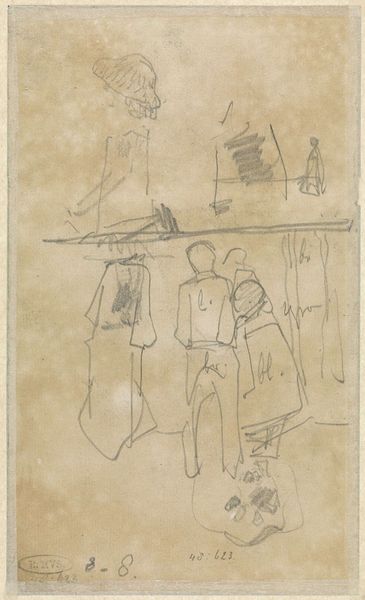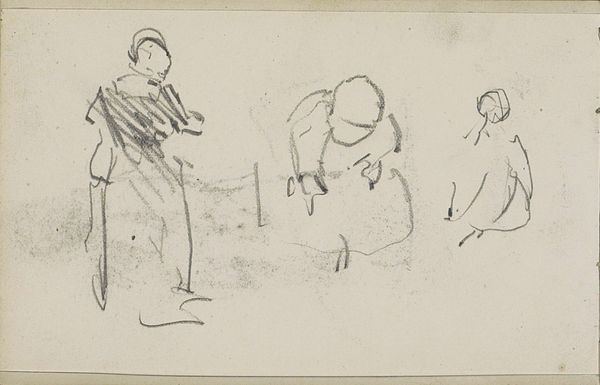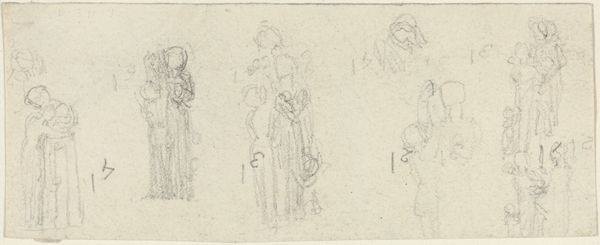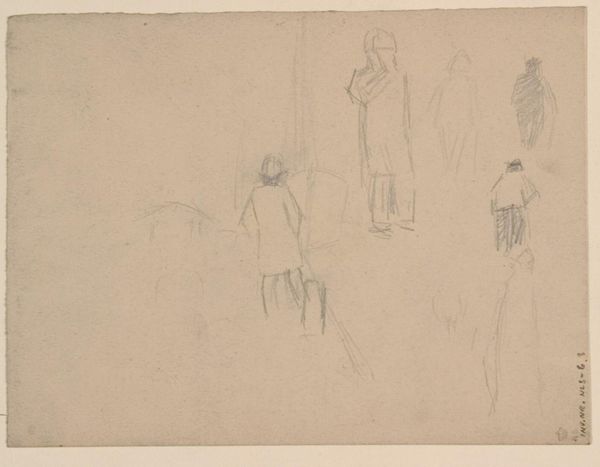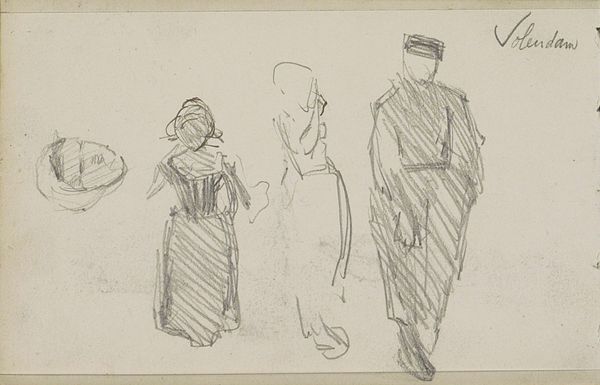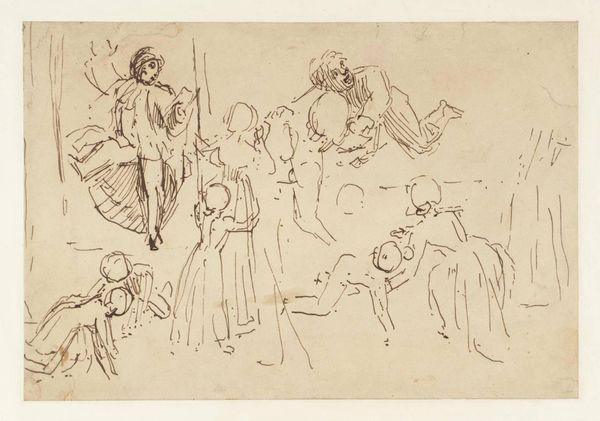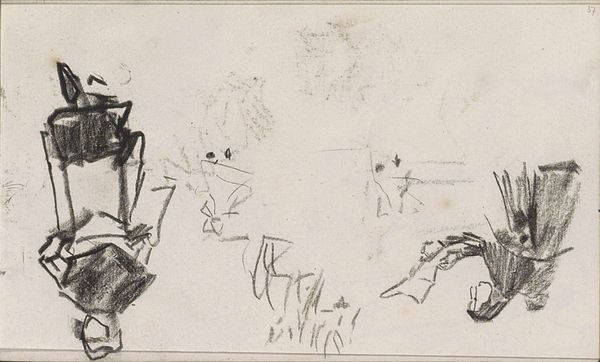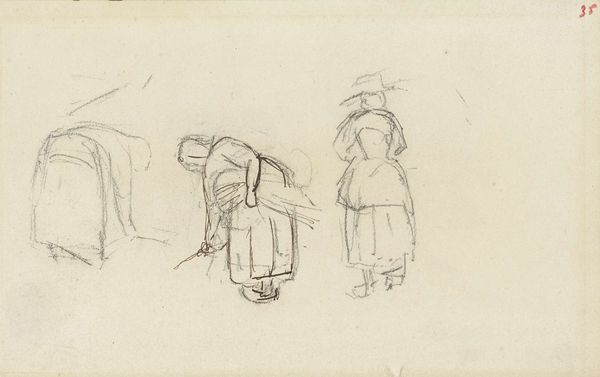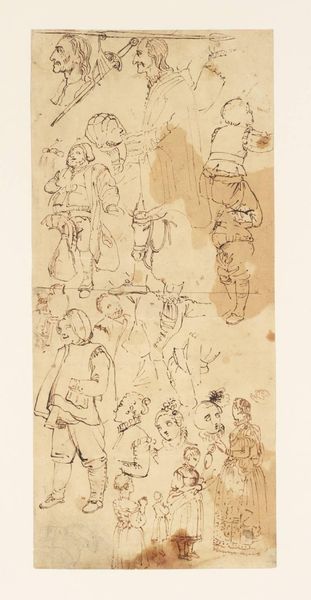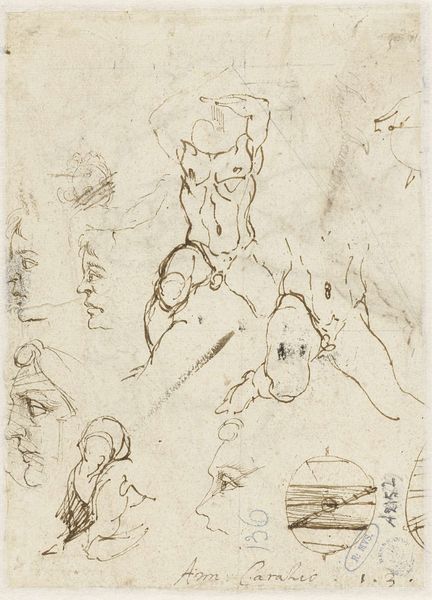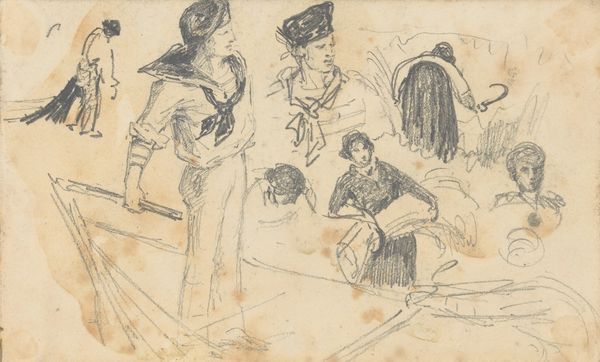
#
light pencil work
#
quirky sketch
#
pencil sketch
#
incomplete sketchy
#
personal sketchbook
#
idea generation sketch
#
ink drawing experimentation
#
pen-ink sketch
#
sketchbook drawing
#
sketchbook art
Dimensions: height 280 mm, width 419 mm
Copyright: Rijks Museum: Open Domain
Editor: This is "Studieblad met schetsen van personen," a study sheet with sketches of people by Gerrit Willem Dijsselhof, made sometime between 1876 and 1924. It's at the Rijksmuseum. It looks like a page torn from a sketchbook, with several figures rendered in pencil. I am fascinated by the apparent freedom that the artist granted himself, focusing on his initial idea more than any particular style or the desire to refine an individual figure. What catches your eye in this work? Curator: I'm drawn to the sheer act of creation visible here. The pencil, the paper - these are the basic tools of artistic labor. Each mark represents a decision, a moment of interaction between Dijsselhof and his materials. This wasn’t necessarily meant to be viewed as ‘art’ in the traditional sense; it seems closer to a record of artistic labor. Do you think viewing this page as such alters our understanding? Editor: Definitely. Seeing it as part of the artist's process, rather than a finished product, makes me consider the economics of art. How much time, and thus, money, goes into what we consume as the completed image? And it makes me wonder, who was Dijsselhof sketching? What were their social roles, if anything at all? Curator: Exactly. Consider the clothing, the hats. These sketches provide clues about the sartorial conventions and social strata of the time. Each quick stroke builds into social insights; it's less about capturing perfect likenesses, more about rapidly depicting individuals participating in the spectacle of society. Does seeing it in this light change how you value the image? Editor: It does. Thinking about the materials and labor makes it much more vivid. Thanks! Curator: Indeed. Reflecting on the conditions of creation offers new perspectives and new appreciation.
Comments
No comments
Be the first to comment and join the conversation on the ultimate creative platform.
